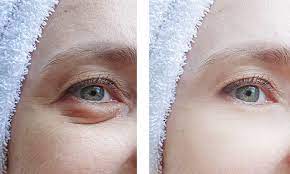Droopy eyelid surgery can enhance your eye shape, giving you a more youthful and rested appearance. The procedure gets rid of excess skin and fat around the eyes, reducing the appearance of under-eye bags or the symptoms of ptosis. Choose a professional oculoplastic surgeon to improve your visual field, appearance, and confidence.
How Often Can You Do the Surgery?
There’s no standard number of times you can undergo blepharoplasty since every patient is different. You should only repeat the surgery if the ptosis returns. To learn more, seek guidance from a blepharoplasty surgeon
Your age could determine the number of times you need to do the surgery, as its results are intended to last a lifetime but could need to be updated within several years. Patients with congenital ptosis may need surgery more often than people who develop ptosis in adulthood.
What Does Droopy Eyelid Surgery Entail?
The surgery begins with the injection of general anesthesia, local anesthesia, or general sedation to prevent pain. Depending on your age and preference, your surgeon may perform the surgery when you’re awake or asleep. Some professionals prefer conducting adult surgeries when patients are awake, as this facilitates cooperation and may lead to a better eyelid height adjustment.
After sedation, your surgeon will make a fine incision on your eyelids to reveal the levator muscle. The levator muscle raises the upper eyelid and maintains its position. Shortening this muscle can eliminate droopy eyelids, allowing you to look younger and improve your field of vision.
A qualified surgeon will likely make the incision around the natural lines of your eyelid and repair the incision with stitches on the inside of the eyelid to limit apparent scarring.
How Do You Have a Fast Recovery?
Recovering from blepharoplasty can take days or weeks. Here are some things you can do for a fast recovery:
Don’t Wear Contact Lenses Without Consulting With Your Surgeon
Sometimes, droopy eyelids may result from the long-term use of contact lenses. Your surgeon will advise you to replace your contact lenses with glasses until you heal from your surgery to guarantee the best results.
Avoid Exposure to Direct Sunlight
Sun exposure before healing can discolor your scar and prolong the recovery period. You should stay indoors for a few days after surgery to limit exposure. If you must go outside, wear a hat and sunglasses to protect your eyes. You can also wear sunscreen a few days after your surgery or as your surgeon advises.
Take Time off From Regular Activities
You should avoid strenuous activities for a few days after your surgery to allow the incisions to heal. This may involve taking some time off of work, so reassign your duties or notify your manager in advance. You also need to avoid tasking exercises like swimming and running before you heal. You can temporarily replace your workouts with walking.
Can You Increase the Procedure’s Longevity?
The better care you take of your skin, the lower the risk of eyelid muscles loosening too soon after your procedure. Here are some tips to consider:
Stay Nourished
What you eat can directly affect your skin, particularly as you age. To improve your surgery’s longevity, you should take foods rich in proteins and vitamin C. Proteins like poultry and fish can boost collagen production because they contain proline, glycine, and hydroxyproline. These amino acids make collagen, which plays a key role in preventing skin sagging around the eyelids.
Vitamin C helps synthesize collagen as it’s a cofactor for lysyl hydroxylase and prolyl hydroxylase, enzymes that catalyze the hydroxylation of collagen and stabilize the collagen molecule. The more you incorporate proteins and vitamin C into your diet, the longer you can maintain your results.
Keep Hydrated
Water can help boost the production and strength of collagen and elastin, keeping the levator muscle tight for longer.
You can set daily water drinking targets to keep you motivated to hydrate. If drinking water is a problem, consider eating foods rich in water, like soup, or hydrating fluids like coffee or coconut water.
Get a Medical Checkup
Droopy eyelids can result from the gradual weakening of the levator muscle, trauma, or past eye operations. The condition can also be a symptom of tumors, stroke, diabetes, and horner syndrome. If caused by a medical condition, seeking treatment can make the surgery’s results more long-lasting. Schedule a consultation with your physician to determine the cause of your ptosis.
Try Droopy Eyelid Surgery
Droopy eyelid surgery can improve your peripheral vision and give you a more youthful look. The procedure’s results may last for years, so you won’t need to redo the surgery soon after your initial one. Take care of yourself by eating healthy, drinking plenty of water, and seeking medical assistance to increase the longevity of your surgery’s results.































